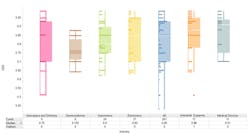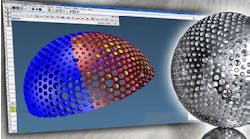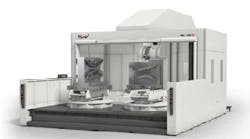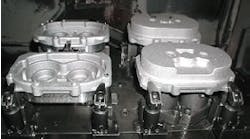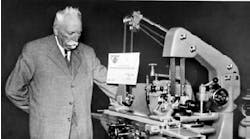This is the second in a series of online reports on manufacturing technology in Italy. Read the previous report here.
Italian brand names such as Gucci and Prada have become synonymous with style and high fashion around the world. But in Italy the leather goods that have made these designer brands so popular mean much more than looking good.
Italy produces approximately 50% of the machinery used to produce footwear and leather goods around the world and 80% of tanning machinery globally, according to Assomac, an association that represents Italian manufacturers of machines for footwear, leather and tannery industries. Many of the manufacturers are small, with the entire industry employing approximately 6,200 people in Italy.
There are three basic tanning centers in Italy, says Peter Helfer, a managing partner at Campex LLC, an Exeter, N.H., a company that sells Italian leather-making machinery in North America. Whole hides and bovine leather production for belts and soles is primarily located in Santa Croce, Florence; lamb skins are processed primarily in Solofra near Naples; and whole hides used for furniture or automotive upholstery are produced in Arzignano.
The leather-making industry in these regions has grown significantly since World War II when it was mainly a craft, though it faces challenges similar to those in many U.S. industries.
Competition from China, recessionary pressures and changing consumer habits have negatively impacted the industry. In Italy leather-making machine manufacturers have responded by focusing on quality and technological advancements, while diversifying their product offerings.
Italian leather-making machines have become more "intelligent," providing information to technicians about defect causes, says Helfer. Problems with leather sometimes aren't apparent until months after the customer has received a product, making it difficult to determine how defects occurred. Automation has helped leather manufacturers identify where problems have originated with feedback and historical information about what has happened to different lots of leather as it moves through the machines, says Helfer, who has been involved in the industry for more than 30 years.
Other advancements have helped improve yield, which is critical in the leather-process industry where the product is sold by area, Helfer says. But unlike more traditional production processes, such as automotive, leather processing can't be completely automated without causing quality issues, Helfer says.
"The right way to do this is to have the operators watch the leather and what's going on," he says. "When one tries to automate completely like you would do in the automotive industry or steel products, it's a big disaster because nobody is watching the product." What makes the leather industry unique is that even though there are many doctor's of chemistry and engineers and a lot scientific knowledge, it's still a craft."
Like many industrial sectors around the world, leather-processing machinery has been battered by its ties to the auto industry.
Decreased demand from automotive leather tanneries has cut into leather-making machine sales, Helfer says. During the first quarter of 2009 exports dropped by as much as 66%, according to Giulio Tandura, president of Assomac. Some manufacturers have responded to the decline by diversifying their product offerings.
Leather finishing machine manufacturer Gemata SpA now produces glass equipment for the glass and textile industries, says Gianni Maitan, Gemata's executive director.
"We have increased the research for new products and have diversified production, looking for new markets -- textile and glass industries -- which can [benefit] from our production," he says.
One of the company's most-recent product introductions is Topstar, which makes it possible to finish leather without using spraying lines, Maitan says. The company says such roller-coating machines can reduce chemical consumption by 50% to 70% and more uniformly distribute pigments and chemicals on the leather surface.
Even with such advancements, Maitan admits the industry will continue to face tremendous pressure from China as it continues to expand. Maitan says his company is taking steps to reduce production and raw materials costs to be more competitive.
In order to accomplish its goals, Maitan says the company is involving all of its suppliers and personnel in many of its operations, such as assembly and technical service, to drive lean manufacturing practices.
This is the second in a series of online reports on manufacturing technology in Italy. Read the previous report here.
